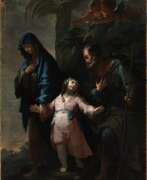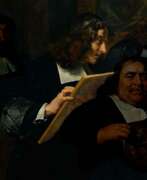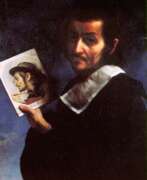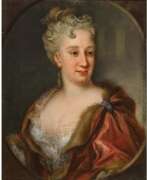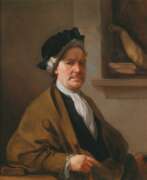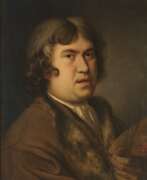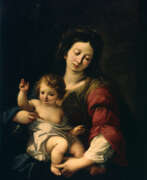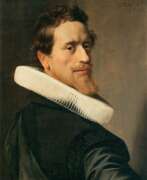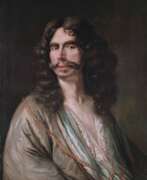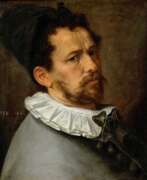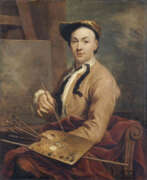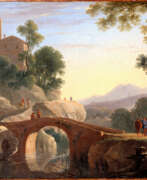Self-portrait 17th century
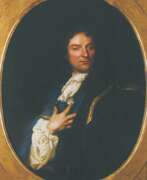

Filippo Abbiati was an Italian painter, renowned for his contribution to the Baroque period. Born in Milan in 1640, Abbiati's training under Carlo Francesco Nuvolone and Antonio Busca honed his skills, leading him to develop a distinct style characterized by fluid touch and luminous foundations. His work was heavily influenced by early seventeenth-century Lombard painting and later, the Roman Baroque and Venetian painting.
Abbiati's career was predominantly based in Milan, where he produced numerous significant religious and historical paintings. Notable works include the altarpiece of the Preaching of St. John the Baptist for the Sanctuary of the Beata Vergine dei Miracoli in Saronno and the extensive frescoes in the Milanese church of Sant'Alessandro. His masterpieces are celebrated for their dynamic composition and expressive intensity, marking a transition toward the Rococo movement.
Though details about his later years remain sparse, Abbiati's legacy lives on through his influential frescoes and the mentorship of notable students like Alessandro Magnasco. His works can still be admired in places like the Pinacoteca di Brera in Milan and the Biblioteca Ambrosiana.
For collectors and enthusiasts looking to explore the depth of Italian Baroque, Filippo Abbiati's work offers a rich narrative woven through the tapestry of art history. Sign up for updates on auctions and new discoveries related to Filippo Abbiati, ensuring you stay informed about opportunities to own a piece of this illustrious artist's legacy.
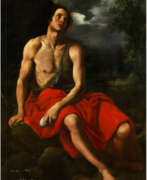

Cristofano Allori was an Italian painter of the late Florentine Mannerist school, painting mostly portraits and religious subjects. Allori received his first lessons in painting from his father, Alessandro Allori, but becoming dissatisfied with the hard anatomical drawing and cold coloring of the latter, he entered the studio of Gregorio Pagani. When still young he became a court portraitist for the Medicis, though many of his commissions were replicas of portraits by his predecessor Bronzino, or had participation by others.[citation needed. His pictures are distinguished by their close adherence to nature and the delicacy and technical perfection of their execution. His most famous work, in his own day and now, is Judith with the Head of Holofernes.
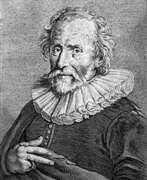

Abraham Bloemaert was a Dutch painter, draughtsman, and printmaker from the Golden Age of Dutch painting, one of the founders of the Guild of St. Luke in Utrecht. Bloemart was a caravagist. He painted mainly landscapes, mythological and biblical scenes, and pastoral works.
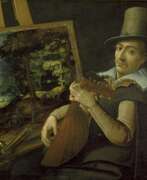

Paul Bril was a prominent Flemish painter, best known for his significant contributions to landscape painting. Born around 1554 in Antwerp, he later moved to Rome, where he became a central figure in the art scene, influencing the Italian and Northern European landscape painting traditions.
Paul Bril's early works were steeped in the Flemish manner, exhibiting a picturesque arrangement of landscape elements with dramatic contrasts of light and dark. His style evolved during his stay in Rome, influenced by the work of Annibale Carracci and Adam Elsheimer. By around 1605, Bril's compositions became more serene and classical, showcasing calmer transitions from foreground to background and embracing pastoral and mythological themes.
Paul Bril's contributions extended beyond his paintings. He was a respected figure in Rome's art community, becoming the first foreign director of the Accademia di San Luca in 1621. His patrons included some of the most influential families in Rome, and his work was sought after by collectors and fellow artists. Bril's influence was profound, impacting future generations of artists, including the Dutch Italianates and genre painters active in Rome.
His works can be found in prestigious galleries worldwide, illustrating his enduring legacy in the art world. For collectors and art and antiques experts, Paul Bril's work represents a significant period in the evolution of landscape painting, blending Flemish traditions with Italian classicism.
For those interested in exploring the captivating landscapes and historical significance of Paul Bril's art, staying informed about new product sales and auction events is essential. Signing up for updates can provide valuable insights and opportunities to acquire pieces associated with this influential artist.
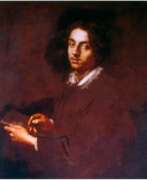

Simone Cantarini, an Italian painter and etcher, is renowned for his significant contributions to Baroque art. His early artistic journey was shaped by local naturalism and Venetian influences, notably under Giovanni Giacomo Pandolfi and Claudio Ridolfi. Cantarini's work is distinguished by its blend of Bolognese classicism and a keen naturalism, drawing inspiration from the likes of Federico Barocci, Guido Reni, and Caravaggesque artists like Orazio Gentileschi.
Simone Cantarini's oeuvre spans religious subjects, reflecting the Counter-Reformation's influence, to expressive portraits and dynamic etchings. His art, which shows a fascination with light and color, evolved towards a more personal style over time, moving away from academic classicism to embrace a more naturalistic and lyrical approach.
His works, such as "The Holy Trinity in Glory" and "The Rest on the Flight into Egypt," showcase his ability to infuse traditional themes with a fresh perspective and emotional depth. Simone Cantarini's legacy continues to be celebrated in various collections worldwide, where his masterful blend of classicism and naturalism remains a subject of admiration and study.
For collectors and experts in art and antiques, understanding Cantarini's artistic journey and the distinct qualities of his work offers valuable insights. If you're keen on staying informed about Cantarini's works, exhibitions, and auctions, consider subscribing for updates. This subscription will keep you abreast of new findings and opportunities related to Simone Cantarini's art, enhancing your collection and knowledge in this specialized field.
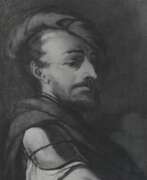

Giulio Carpioni was an Italian Baroque painter, etcher, and a significant figure in the early Baroque period, primarily associated with Venice and Vicenza. His artistic journey began under the mentorship of Alessandro Varotari, known as Il Padovanino. Carpioni's work was influenced by various artists and styles, including the realism and objectivity characteristic of Saraceni and Jean Leclerc, as well as Lombard painting, which he encountered during a trip to Bergamo.
Giulio Carpioni's oeuvre includes a mix of religious and mythological subjects, demonstrating a penchant for narrative and allegory, often depicted with a distinctive graphic line and a warm tonal palette. Noteworthy works include the Apotheosis of the Dolfin family and the Allegory of the Grimani Family, showcasing his ability to blend mythological themes with a vibrant expression of Baroque aesthetics.
His bacchanal scenes, such as the one described in a detailed analysis on the Museo Nacional Thyssen-Bornemisza's website, exhibit his skill in composition and use of color to create dynamic, engaging scenes. Giulio Carpioni's influence extended through his etchings and collaborative works, contributing significantly to the art culture of his time.
For collectors and art enthusiasts interested in Carpioni's work, staying informed about exhibitions, sales, and auctions is essential. Signing up for updates can provide access to the latest information on Giulio Carpioni's pieces, ensuring you don't miss out on new discoveries or opportunities to add to your collection.
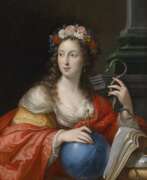

Cesare Dandini was an Italian painter of the Baroque period, active mainly in his native city of Florence. He was the older brother of the painter Vincenzo Dandini. He enrolled in 1621 in the Accademia del Disegno. His style has the polish and attention to draughtsmanship and design characteristic of Florentines like Carlo Dolci.


Jean-François de Troy was a French Rococo easel and fresco painter, draughtsman and tapestry designer. One of France's leading history painters in his time, he was equally successful with his decorative paintings, genre scenes and portraits. He was the inventor of the tableaux de modes ('paintings of fashions'), which attempted to provide a spirited portrayal of contemporary fashions, pastimes and manners.
He was the Director of the French Academy in Rome from 1738.


Francesco Cairo, also known as Francesco del Cairo, was an Italian Baroque painter active in Lombardy and Piedmont. It is not known where he obtained his early training though he is strongly influenced by the circle of il Morazzone, in works such as the Saint Teresa altarpiece in the Certosa di Pavia. Many of his works are eccentric depictions of religious ecstasies; the saints appear liquefied and contorted by piety. He often caps them with exuberant, oriental turbans.


Johannes Dünz was a Swiss painter and representative of the Bernese Baroque.
Johannes Dünz studied in Bern under the painter Albrecht Kau (1616-1682). In the 1670s he was already painting portraits of noble townspeople and young representatives of the von Erlach and von Wattenville families in particular. He soon became the leading portraitist in these circles.
Dünz painted many portraits of Bernese patricians, leads and still lifes, as well as some remarkable group portraits. His work The Library Commission, in which both portraits and interior decoration are meticulously reproduced, is one of the most important group portraits of 17th-century Swiss painting. Johannes Dünz also possessed the skill to transform ordinary city vistas into spacious panoramic landscape paintings, paying particular attention to detail. And in his still lifes, he was sure to emphasize the four seasons, praising the labor of peasants and blessing the harvest.


Baldassare Franceschini, called Il Volterrano after his birth place Volterra and, to distinguish him from Ricciarelli, Il Volterrano Giuniore was an Italian late Baroque painter and draughtsman active principally around Florence and Volterra. He was mainly known for his frescoes, altarpieces and easel paintings for churches and palaces in Florence, Volterra and Rome. His subject matter was diverse and included portraits, biblical and mythological scenes, history paintings and allegorical compositions.
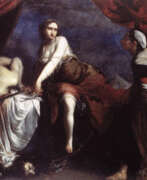

Francesco Furini was an Italian painter, renowned for his contributions to Baroque art. Born in Florence in 1603, Furini's artwork is a testament to the artistic transitions of his time, merging the detailed mannerist style with emerging Baroque influences. His mastery in using the sfumato technique brought life to his paintings, making them notable for their ethereal quality and emotional depth.
Francesco Furini's journey into the world of art began under the guidance of his father, leading to further refinement of his skills in Rome, where he absorbed influences from Caravaggio and his followers. Upon his return to Florence, his work gained admiration from notable figures, including Galileo Galilei. However, facing criticism for his depictions of female nudes, Furini took a surprising turn by entering the priesthood in 1633, yet he continued to paint, producing some of his most significant works during this period.
Among his masterpieces are the frescoes in Palazzo Pitti, commissioned by Ferdinando II de' Medici, which display a departure from his usual canvas style. These works, alongside others like "Hylas and the Nymphs," are celebrated for their intricate portrayal of mythological and biblical themes, characterized by a unique blend of sensuality and spirituality.
Francesco Furini's legacy, once overshadowed, has been re-evaluated, shedding light on his profound impact on Florentine and Italian Baroque painting. His ability to convey deep emotions through art continues to captivate art enthusiasts and experts alike.
For those intrigued by the allure of Baroque art, Francesco Furini's oeuvre offers a fascinating exploration into the era's complex artistic expressions. To stay informed about upcoming sales and auction events featuring Furini's work, sign up for updates and immerse yourself in the captivating world of art history.
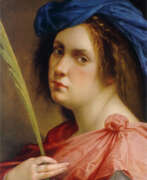

Artemisia Gentileschi was a pioneering Italian painter of the Baroque era, celebrated for her vivid portrayals of dramatic scenes and strong female figures drawn from mythology, allegory, and the Bible. Born in Rome in 1593, Gentileschi broke through the gender barriers of her time to become one of the first women to achieve fame as an artist. Her early exposure to painting came through her father, Orazio Gentileschi, a follower of Caravaggio, whose influence is evident in Artemisia's use of chiaroscuro and realistic, emotional expression.
Gentileschi's artistry is particularly noted for its naturalism and the dynamic use of color, which she employed to convey depth and drama. Among her most renowned works are "Susanna and the Elders" (1610), showcasing her skill in portraying the vulnerability and dignity of its subject, and "Judith Slaying Holofernes" (c. 1614–1620), a vivid depiction of strength and determination, housed in the Uffizi Gallery. These works, along with others like "Judith and Her Maidservant" (1625) in the Detroit Institute of Arts, highlight her unique ability to present female subjects not just as objects of beauty, but as agents of power and action.
The complexity of Gentileschi's life, including her survival of rape by Agostino Tassi and the subsequent trial, has often overshadowed her artistic achievements. However, modern scholarship and exhibitions, such as those at the National Gallery in London, have reevaluated her contributions, positioning her as a significant figure in art history for both her mastery of Baroque painting techniques and her role in challenging the era's gender norms.
For art collectors and experts, Gentileschi's works are emblematic of the Baroque spirit and a testament to the resilience and talent of women artists in a male-dominated field. Her paintings are not only valuable for their aesthetic and historical significance but also for their inspirational narrative of overcoming personal and societal challenges.
To stay updated on new product sales and auction events related to Artemisia Gentileschi, signing up for updates is recommended. This subscription ensures you remain informed about opportunities to acquire pieces related to this groundbreaking artist, without any pomp or unnecessary fluff, focusing purely on her incredible legacy in the realms of culture, art, and painting.
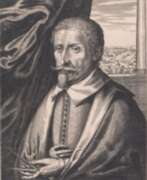

Hendrik Hondius I was a Flemish-born and trained engraver, cartographer, and publisher who settled in the Dutch Republic in 1597. Hondius was apprenticed in Brussels to Godfried van Ghelder, goldsmith to Alexander Farnese, Duke of Parma. He also studied drawing with the engraver Jan Wierix of Antwerp. At this time he started to study engraving. He applied himself to mathematics and studied perspective, architecture and the construction of fortifications. He moved to The Hague by 1597. He obtained his first print privilege for a portrait of Prince Maurits. He dedicated himself to his engraving practice. His work was very well received and he got commissions from many eminent personalities for engravings or drawings. He turned more to publishing rather than engraving and printing in the 1630s. His publications were mainly maps, books about fortifications and official portraits.[5] He also reused original plates and blocks by earlier artists for reprinting and such reprints represented almost a third of his publishing output. In the 1640s he returned to printing concentrating exclusively on etching. One of the most important publications of Hondius was the work Pictorum aliquot celebrium praecipue Germaniae inferioris Effigies (Effigies of some celebrated painters, chiefly of Lower Germany) of 1610, which was a collection of 69 portraits of mainly Netherlandish artists.
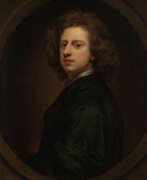

Sir Godfrey Kneller, 1st Baronet (born Gottfried Kniller) was a late seventeenth- and early eighteenth-century German painter and the leading British portrait painter of his era.
Gottfried Kniller was an immensely popular painter among the English nobility, and over the course of his career he produced hundreds of paintings depicting influential European nobles and royalty. His unique masterpieces are preserved in many museums across Europe, and his biography is an example of the successful career of a great master.
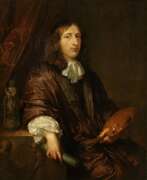

Caspar Netscher was a Dutch painter of the Golden Age of Dutch painting, known for his portraits. Netscher chose subjects from the life of the Dutch elegant and wealthy class; he painted many small portraits - mostly of women; some of them historical. After spending some time in Paris, he painted several persons belonging to the court of Louis XIV. In addition to the above-mentioned usual subjects, he depicted sometimes historical and biblical scenes.
Caspar Netscher's paintings were kept in many art galleries: in the Louvre, Amsterdam, Florence, in several private collections in England and in many other places. In the Hermitage at the beginning of the 20th century there were six of his paintings, including a portrait of the artist himself and a portrait of Mary Stuart, painted in 1683; today only two works have survived.
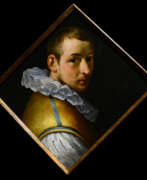

Cornelis Cornelisz. van Haarlem was a Dutch painter, draftsman, and architect. Along with Karel van Mander and Hendrik Goltzius, he is one of the leading artists of the Dutch Mannerism of the Haarlem School, more commonly referred to as Cornelis van Haarlem.
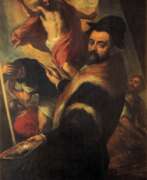

Iacopo Negretti, best known as Jacopo or Giacomo Palma il Giovane or simply Palma Giovane ("Young Palma"), was an Italian painter from Venice and a notable exponent of the Venetian school. After Tintoretto's death (1594), Palma became Venice's dominant artist perpetuating his style. Outside Venice, he received numerous commissions in the area of Bergamo, then part of the Venetian Domini di Terraferma, and in Central Europe, most prominently from the connoisseur emperor Rudolph II in Prague. Rejecting Mannerism in the 1580s, he embraced a reformist naturalism.[6] He varied the ingeniously synthesised amalgam according to subject matter and patrons' own eclectic and conservative tastes, with "virtuoso skill and a facile intelligence". Palma il Giovane went on to organize his own, large studio which he used to produce a repetitive series of religious and allegorical pictures that can be found throughout the territory of the Venetian Republic.
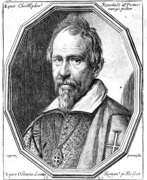

Cristoforo Roncalli was an Italian mannerist painter. He was one of the three painters known as Pomarancio or Il Pomarancio. Most of his fresco work was in Rome, though he worked for a decade in Loreto, where he decorated the New Sacristy.
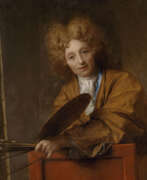

Jean-Baptiste Santerre was a French painter and draughtsman of the Style Louis XIV, known for his history paintings, portraits, and portrait-like genre subjects. Considerably influenced by Italian masters of the Bolognese school as well as his French contemporaries, Santerre nonetheless made an original contribution in his art, being among the first French painters to bring Netherlandish influences.
After achieving initial success as a portrait painter by the late 1690s, Santerre began to branch out into the fields of genre painting and, in which he combined the fantasy portrait of Northern tradition, as seen in the art of Rembrandt and Gerrit Dou, with the allegorical portrait, then fashionable in France. At the same time, he also painted history paintings and altarpieces of biblical and religious subjects, suffused with a strong erotic character.
Santerre's work brought him a controversial reputation, in light of his association with the French Regency era; it was during the 19th and 20th centuries when it met a broader appreciation. Santerre is regarded as a precursor of the Rococo era painting, as well as of both Neoclassical and Romantic painting, and was said to be an influence on subsequent generations of artists during the said eras.
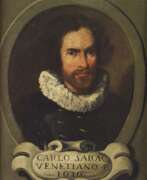

Carlo Saraceni was an Italian painter, renowned for his contributions to the Baroque art movement. Born in Venice around 1579, Saraceni spent a significant portion of his career in Rome, where he was deeply influenced by the works of Caravaggio and Elsheimer. His art is celebrated for its vivid naturalism and meticulous detail, reflecting the stylistic transitions of early 17th-century Italian painting.
Saraceni's ability to blend Venetian colorism with Roman naturalism allowed him to create works that resonated with patrons across Europe, securing commissions from prominent ecclesiastical and aristocratic figures. His paintings, such as "Judith and the Head of Holofernes" at the Kunsthistorisches Museum in Vienna and "Saint Sebastian" at the Picture Gallery of the Prague Castle, showcase his mastery in depicting biblical and mythological scenes with emotional depth and realism.
Notably, Saraceni's work "The Dormition of the Virgin" was commissioned to replace a rejected painting by Caravaggio, indicating his stature and recognition in the artistic community of Rome. This commission highlights the nuanced differences in interpretation and representation of religious themes that distinguished Saraceni's approach from Caravaggio's.
Throughout his career, Saraceni remained connected to the vibrant artistic scene in Rome, engaging with the broader European context through his international relations. His legacy is preserved in the numerous works held in galleries and museums worldwide, reflecting his enduring influence on the Baroque art movement.
For art collectors and experts, Saraceni's oeuvre represents a pivotal moment in the transition of artistic styles, offering a rich tapestry of themes and techniques that continue to inspire and captivate audiences.
To stay updated on new product sales and auction events related to Carlo Saraceni's works, consider signing up for updates. This subscription is a great way to remain informed about opportunities to engage with the art and legacy of this influential Baroque painter.
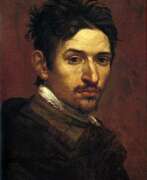

Alessandro Tiarini was an Italian Baroque painter of the Bolognese School. He was the godson of painter Lavinia Fontana and initially apprenticed in Bologna under her father Prospero Fontana, and subsequently with Bartolomeo Cesi. He was not inducted into the Carracci Academy. Forced to flee from Bologna, he moved to Florence, where he painted frescoes, façade decorations, and altarpieces. He painted a series of frescoes for the Brami Chapel in the sanctuary, as well as other works, for the Basilica della Ghiara in Reggio Emilia.
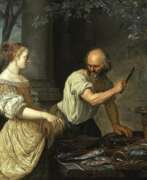

Jacob Toorenvliet was a Dutch painter and graphic artist of the Gilded Age, a master of genre painting and printmaking.
Jacob Toorenvliet was a member of the Leiden Guild of Saint Luke. Together with Willem van Mieris and Carel de Moor he founded the Academy of Arts (Tekenacademie).
Jacob Torenvliet's style of painting has its origins in the genre painting of Leiden. Torenvliet's paintings contain elements of fine painting. The artist incorporates all kinds of influences in his work, but mixes them with his own forms of expression.
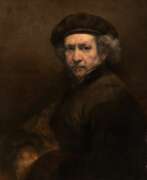

Rembrandt Harmenszoon van Rijn, a Dutch Baroque painter and printmaker, was born on July 15, 1606, in Leiden, Netherlands, and died on October 4, 1669, in Amsterdam. He is celebrated as one of the greatest storytellers in art history, acclaimed for his adept portrayal of human emotions and dramatic narratives. Rembrandt's extensive oeuvre includes portraits, self-portraits, landscapes, genre scenes, allegorical, historical, and biblical themes, as well as animal studies. His artistry shined during the Dutch Golden Age, a period marked by cultural and scientific achievements in the Netherlands.
Rembrandt's education in art began around the age of 10 when he left the Latin School in Leiden to train as an artist. He apprenticed with artists like Jacob van Swanenburg and Pieter Lastman, mastering various aspects of painting. He opened his own studio in Leiden around 1624 or 1625, sharing it with his colleague Jan Lievens. By 1631, he had moved to Amsterdam, where he achieved significant success and trained many important Dutch painters.
Among Rembrandt's notable works are "The Anatomy Lesson of Dr. Nicolaes Tulp" (1632), "The Night Watch" (1642), and "The Syndics of the Amsterdam Drapers’ Guild" (1662). He was also renowned for his self-portraits, creating around 80 over his lifetime, more than any other artist until the 20th century. These self-portraits were not just artistic endeavors but also experiments with facial expressions and lighting effects. Additionally, Rembrandt was a master etcher, transforming etching from a reproductive technique into an art form.
Rembrandt's painting style is characterized by its dramatic use of light and shadow, known as chiaroscuro. His ability to depict materials realistically was unparalleled; his portrayal of metals and fabrics was so lifelike that they appeared to glow and be tangible. He was also known for his impasto technique, applying paint thickly to the canvas, adding a three-dimensional quality to his works.
Despite his artistic prowess, Rembrandt faced financial difficulties and personal tragedies throughout his life. He declared bankruptcy in 1656, a downfall attributed partly to his extensive collection of art objects and curiosities. His masterpieces, however, continued to garner appreciation and influence generations of artists that followed.
For collectors and experts in art and antiques, Rembrandt's works represent a pinnacle of artistic achievement in the Dutch Golden Age. His mastery in portraying the human condition and his innovative techniques in painting and etching make his works highly prized and influential in the art world.
To stay updated on new product sales and auction events related to Rembrandt van Rijn, sign up for our updates. This subscription service is dedicated exclusively to news and events concerning works related to this unparalleled master of the Dutch Golden Age.
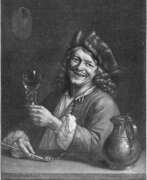

Pieter Gerritsz. van Roestraeten was a Dutch painter who spent most of his life in Great Britain.
He lived in Amsterdam, and in 1666 moved to London, where he remained for the rest of his life, enjoying the highest patronage.
Roestraeten painted mainly still lifes with luxury goods, as well as still lifes in the vanitas style. He created at least four self-portraits, and often painted his own reflections on polished silver objects in still lifes. The artist also depicted genre scenes from the everyday life of the common people.


